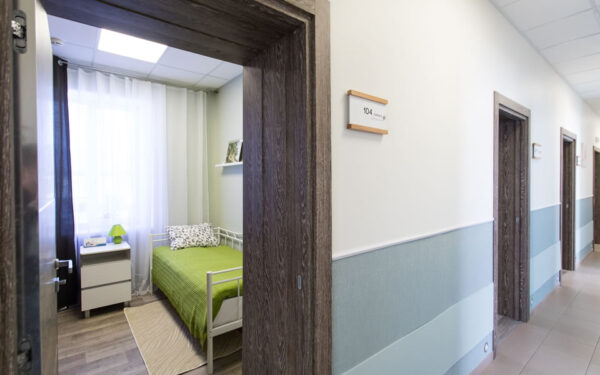Buying a Dental Practice
By Jon Almeida, CPA, CFE, ABV, Partner, Tax & Business Services
In the career of any dental practitioner there will likely come an opportunity to purchase a practice, either fresh out of dental school or after having worked in other practices for many years. There are many factors to consider when evaluating the potential purchase of practice. There are also considerable risks and costs associated with the life-changing proposition of a practice acquisition. Proper assessment of the target practice may improve the chances for success or…help avoid a bad deal from the start. In making this assessment, it is important to have an understanding of what drives value for dental practices and the transactional considerations of an acquisition.
How are practices valued?
In a situation where an associate practitioner is looking to buy into a practice or a practice owner is looking to expand an existing practice, the prospective buyer must be able to properly evaluate the purchase price. It is advisable to engage a qualified business appraiser to assist with this assessment. Business valuation professionals utilize three major approaches when valuing a business– the asset approach, income approach, and market approach. In the asset approach, the valuator looks to value, individually, all of the tangible and intangible assets of the business less any liabilities. An income approach determines value based on consideration of the ability of a business to generate an income stream into the future and the application of a risk factor to the income stream. The market approach applies attributes of actual market transactions for similar companies to the company being valued.
The income approach is likely the most appropriate when assessing the potential value of a dental practice, due to the quantity of historical information likely to be available during the vetting process. In comparison, the asset approach would be more challenging, as significant intangible assets make up much of a dental practice’s value, including patient list, location, practice name, and workforce in place, which are more difficult to value individually than tangible assets, such as equipment. The market approach is also not ideal. While there may be many comparable transactions to reference, since dental practices turn over frequently and there are thousands of practices, the task of determining whether or not other transactions are substantially similar to a prospect entails a certain amount of uncertainty. However, the market approach may be useful as a “sanity check” on an income approach for a specific purchase.
Value Considerations
It is important to assess the transferability of the goodwill of the practice. Goodwill is the intangible asset that results from name, reputation and patient loyalty and is a major factor impacting a practice’s income and cash flow. If a portion of this goodwill is not transferable, resulting in a loss of existing patients, the value of the practice will be impaired. Agreeing to have the selling dentist remain on staff for a period of up to a year post-sale to introduce the buyer to patients and instill confidence will go a long way to helping transition the practice’s goodwill. This should be accomplished via a post-sale employment or independent contractor agreement. In the case of a specialty practice that is heavily reliant on referrals from other dentists, the transition period may need to be longer than a year.
Another factor related to maintaining goodwill is a covenant not to compete. A covenant not to compete is an agreement in which the selling dentist agrees not to compete against the buyer in a certain geographic area for a specified time period. These agreements should be carefully drafted with the assistance of an attorney.
The hygiene portion of a dental practice should not be overlooked for its role in maintaining goodwill and bringing value to a practice. A thriving hygiene practice generates income with less direct involvement from the dentist. The recurring nature of hygiene services promotes retention of existing patients. Both of these factors can be expected to have a positive effect in an income approach to valuation.
The duties, hours worked, and salary of the selling dentist should be sufficiently scrutinized when contemplating a purchase, as these factors have a significant impact on practice value. A selling practitioner working less than full time with the compensation of a full-time dentist and discretionary perks such as automobile and entertainment expenses may reveal understated profitability in the company’s books and tax filings. Adjusting for these factors can serve to increase the practice value in applying an income approach. In addition, the reduced hours may create an opportunity for the buying dentist to expand patient service revenues and accept new patients. On the other side of the coin, consideration should be given to the extent of management duties performed by the selling dentist and the hours required for these duties, plus the number of hours required to service the existing patient load. If there is an indication that these hours and duties are excessive relative to salary, profitability may be overstated and would serve to decrease the practice value to a buyer in an income approach.
In assessing the value of a particular practice, it is also important to compare how the practice measures up to other practices. A comparison of a target practice’s financial data to financial benchmarks for the industry will help in identifying factors contributing to the relative value of the practice. For instance, a practice showing higher than average operating costs may indicate a lower value relative to the transactional data applied in a market approach.
Financing
The ability to finance a purchase must also be considered when assessing value. If a purchase price that appears reasonable to a willing buyer and willing seller cannot reasonably be expected to obtain financing at reasonable terms, the price may be too high. Ideally, a prospective buyer would generally want enough cash flow available from the practice to pay off the acquisition in five years to make the purchase worthwhile.
For many years now banks and national financing companies have understood the value and stability offered in the dental practice industry and have been willing to offer favorable loan terms to facilitate transactions. Seller financing must also be considered as a viable option if available.
Tax Considerations
Most purchases of dental practices are structured as asset acquisitions as opposed to stock acquisitions. This is primarily because a buyer does not want to be saddled with any potential legal liabilities associated with the predecessor. It is important to define in a purchase agreement the specific allocation of what assets of the practice are being purchased, and in what amounts, relative to the overall sales price. For certain assets a buyer may be able to deduct the entire cost in the year of acquisition, even if all or part of the entire purchase price is financed, helping to improve overall cash flow in the early stages of the acquisition. These assets would include equipment, furniture and supplies. Other assets such as non-compete covenants, goodwill, and patient records would be subject to amortization over 15 years, a much longer period in which to realize a tax benefit. When the parties to the purchase and sale report the transaction on their respective tax returns, the required reporting on Form 8594, Asset Acquisition Statement, must be consistent as to the sales price of assets and the fair market value of the respective asset classes.
Conclusion
Buying a dental practice is certainly a life-changing proposition for any dentist. Thorough consideration should be given to the method of assessing valuation and the transactional and tax implications of a potential purchase. When contemplating a purchase, a good first step is to engage qualified valuation professionals, accountants, and attorneys at the start of the process to assist with these considerations.






